Warhammer Underworlds: Beastgrave
The Warhammer Underworlds series starts into its third season with Beastgrave.
After the initial Shadespire and second edition Nightvault, the conflict moves into the bestial realm of Ghur, and gets lost in the Beastgrave. A huge mountain, laced with caverns and tunnels, which are filled with treasure and secrets, luring the warbands into its depth. As usual for the starter set it contains two warbands, the current rules, dice, cards and two hex field boards. The new Beastgrave boxed set got a new price tag and costs 60 EUR instead of the 50 EUR the other two sets cost.
Warhammer Underworlds stays the fast paced arena game and serves as such the hybrid role of aiming at competitive players as well as an introduction game for newcomers to the miniature (board) game hobby.
Inside the box you'll find pre-coloured push-fit miniatures to cover the two opposing warbands. Fitting the more feral style of Beastgrave, those are beastmen and satyr-like Khurnoti hunters. The dice are the same as from the second edition, containing regular battle dice along with the magic dice introduced with Nightvault. There are two booklets included, for the rules along with a quick start rule set, a double sided assembly instruction and a small flyer to advertise the regular Age of Sigmar range.
What is it about?
Where Warhammer Underworlds: Nightvault and Shadespire played in the mirrored city, caughed in limbo between the Realm of Shadows (Ulgu) and the Realm of Light (Hysh), by a curse of Nagash, Beastgrave moves on towards the Realm of Beasts (Ghur) and the "living" mountain of the same name. Where as the motivation for the several warbands to fight within Shadespire and later the Nightvault was either trying to escape the city or to seek for the treasure like the shards, in Beastgrave the fights are more territorial. Where the beastman of Grashrak’s Ravagers live in the forest and slay everyone who dares to enter the Beastgrave, Skaeth’s Wild Hunt is similar to Ylthari's Guardians a warden of the wild. Where the further warbands draw their motivation from, has yet to be unvealed, so far only the Grymwatch (a ghoulish warband) and a pack of goblin wolfriders is known. Both fitting the feral grounds of the forests and wild around the Beastgrave.
With that covering the lore, the Underworld series remains an introduction game for the Games Workshop range. On the one side it is set up as a competitive and compact game. Covering deck building and fast paced games, with a low amount of miniatures and fixed terrain / boards, which lowers the entry barrier for newcomers, but draws attention from "former" bellwethers of that genre like Guildball or Warmachine towards the Age of Sigmar product range. If you want to describe Underworlds from a agile point of view, it is the minimal viable product with a clear scope. It covers two boards, that are ready to play, warbands with a fixed number of miniatures and a self-contained number of non-randomly assigned card decks per season. Perfect for either somebody who is not yet commited to the miniatures hobby as it is, or somebody who lacks either the time or space to go full Apocalypse on it. With fast played matches, of which you could easily play 3 or more in the time of a "regular", other (larger) wargame, that don't take up much space it is very appealing to undecided newcomers and strongly bound veterans (workaholics, family people and such). As for the competitive note of Underworlds. You can play the game casual with the pre-set card decks, or you can build up your own, more complex and redefined decks, using the cards from the boxes and warbands. The Underworlds website provides a card library as well as several deck builds to support the player with this.
First Impression
Beastgrave changes the tone and feel from the cold greens and blues of Shadespire and Nightvault towards warmer colours, like brown and red. The game is well made and covers a lot of things, that you will know from other board games. For example to product the deck of cards, each has a top card that is purely there for introduction and catches the scratches and pressure, to be thrown out after assembly. The boxed set covers a couple of ziplock backs to contain the tokens. The starter boxes of the Underworlds series are solidly made cardboard boxes with a glossy cover, protecting it contents. You can either us the box to transport the later assembled contents or combine it for example with a matching inlay. Underworlds have their own gaming material, that are especially made for the series and no repacks of existing kits (with the exception of Dreadfane that uses the snap-fit / easy to build Sequitors and Mymourn Banshees).
The dice set contains the same dice we know from Nightvault. We have 5 attack dice, 3 black defense dice along with the light blue dice for the use of magic. Beastgrave continues with the pre-assorted deck for the two starter set warbands - the brayherd of Grashrak’s Ravagers and the Khurnoti hunters of Skaeth’s Wild Hunt - , as well as a third deck with more cards to mix in the decks after your first initial matches.
Instead of alternative artwork (that may still be released with the Organised Play kits for the current season), the instore pre-order were glossy hologram cards, as you can see from the picture below. And next to it the comparison of the card design from Shadespire, to Nightvault and the current Beastgrave. The seasons and editions are differentiate with little icons on the right edge of the cards.
There are a lot of tokens included with Beastgrave, but they have the same layout as known from its predecessors Shadespire and Nightvault, as they are re-using the diecut template for the card board. 11 double-sided objective tokens (including deadly hexes), a scatter template, 30 wound tokens, 46 double-sided glory point tokens, - 15 double-sided move and charge tokens, 15 Guard tokens and 8 activation counters. The product description comments on them as "(Probably) all the Warhammer Underworlds tokens you’ll ever need," yet there is a marker set for 12 EUR containing further 48 markers / token.
The two warbands included in Beastgrave are Gashrak's Ravagers and Skaeth's Wild Hunt, casted in pre-coloured plastic in dark brown and green. So you can easily identify your miniatures, prior to painting, and it is more appealing than simple grey.
The two game boards are double sided (with different motives) and have 5 by 8 hex fields, along with half hex fields on the edges that are completed by aligning them with a second game tile. These are new designed boards and even cover dangerous hexes. The design bears the new earthy, amber look as mentioned with Beastgrave. You can see the game tiles in action further below.
The casting is very well done and crisp. All of the miniatures are push fit, so you do not need glue to assemble them. Just a hobby knife or a pair of pliers to get the parts out of the sprue and a knife or file to clean of the few mold lines. The material is the same as the grey hard plastic, can be glued with your regular plastic glue and painted the same way as your other miniatures. If you have the feel, that the material is a bit glossy, give it a brief wash in lukewarm soap water to remove any remaining release agent on the sprues.
Let's start with assembling the first warband. The Khurnoti warband has the same green colour as Ylthari's Guardians connecting them both to the Sylvaneth.
Skaeth’s Wild Hunt is a five model warband, lead by the centaur Skaeth the Huntmen. There are three hunters, one of which, Karthaen the Huntcaller is able to cast magic, and a wild cat, Lighaen. As usual with the Underworlds miniature range, all of the miniatures come with designed bases and and can be assembled without glue, simply by pushing the models together, as the are held together by friction. You could do this very basic, but I suggest that you clean up the models from the mould lines and build them with a bit of glue, to close the thin gaps inbetween parts.
These miniatures are assembled quickly and with the high amount of details, in combination with washes or contrast paints, will quickly be battle ready.
Be careful while assembling these miniatures, the Khurnoti have very fine details and thin limbs, to using to much force to push the parts together might bend or break them. Especially the later will be a problem at transporting the miniatures, as they have very dynamic poses and the bare minimum contact to the bases to show the swift motion of the hunt. I can imagine, that somebody will convert Skaeth as a starplayer for the Blood Bowl Wood Elf team, as it would be a great fit.
The second warband of Beastgrave comes from the Grand Alliance of Chaos, the Beasts of Chaos. It is Grashrak’s Despoilers (called Grashrak's Ravagers in the shop description of the boxed set). Beastmen or Brayherd are a part of the Warhammer chaos range since the very beginning.
The beastmen warband is a bit larger than the Wild hunt and counts 6 models in total. It is led by the Bray-Shaman Grashrak Fellhoof, followed by his personal Bestigor champion Draknar and four ungor raiders / hunters as support. Of course, they are easy-to-build and come with pre-designed bases as usual. More sturdy than the Khurnoti, you only have to take care of the arrows of the two archers.
As such the Despoilers have three models able to range attack and three further for close combat.
I like the composition of this group, a proper choice for the Beastgrave boxed set, without question. As mentioned above, versatile in weaponry and good poses. The characters are present and the ungors have a good supporting design, not to steal to much attention from them.
How does Warhammer Underworlds: Beastgrave play?
As every Underworld boxed set, Beastgrave comes with a quick start rule set, to aid you into and through your first couple of games. Along with the pre-sorted cards, that should be a controlled and easy start into the game. The Underworld rules still stay at 3 turns per player with 4 activations each. Each turn is divided into different phases that allow players to use the activations to use their miniatures and the cards on their hand. The combat sequence reminds me of a combination of Heroquest and Blood Bowl. The dice consider the type of weapon and defense equipment, as well as supporting characters on both sides. And as you have a visual result on your dice, it is (or at least feels) easier and faster than regular dice with boni and mali. And this continued with the addition of magic spells into the weaponry since Nightvault.
Games Workshop provides an How to Play video on Beastgrave hosted by Becca Scott. And you can read the parts on how the game plays in my former reviews on Shadespire and Nightvault as well, so I'll focus on the changes, that Beastgrave introduces.
Beastgrave introduces two double sided new game boards to the game, Shrine of the Silent People, Wyrmgrave, Abandoned Lair and Living Rock. A new addition to the rules is, that you and your opponent have the option to place deadly hexfields at the beginning of a turn, that will certainly affect open matches. For that reason the numbered objectives now have lethal hexes on their back and might even change from one to the other during game.
Most present would be the timing sequence of actions, that is covered in a combat flow chart on the backpage of the rule book. This will clear up the order of events and what happens when (and if). A new addition to the rules are keywords, that you might know from Age of Sigmar or Warhammer 40.000. For example some cards may only be used on fighters with a specific keyword, like hunter. This, in addition of the prior mentioned flow chart, helps to a leaner, less argumented game. This is especially important for a fast paced and competitive game as Underworld is.
A few actions have changed, like guard, that now prevents fighters from being driven back, or the addition of ensnare, which makes evading attacks more difficult. There is the new Superaction, which is a combined action.
Of course, a new season comes with new upgrades, gambits and neutral cards for the entire set of warbands.
This game still is strongly focused on competitive gaming. Maybe even more than before. Organized play is highly supported by the stores and independent retailers. The tournaments (called Grand Clashs) have an interesting price support, ranging from acryl tokens, alternative artworks to shade glass trophies. Ask your local club or store about the details. And the Underworlds rules set covers the opportunity to run multiplayer matches, with up to four players. If you want to know what you can win at such events, you might want to take a look into the unboxings of the Organised Play kits of 2018 (Shadespire) and 2019 (Nightvault).
What's next?
So far, each of the former seasons covered eight warbands in total. I did a complete coverage of these on Season one Shadespire and Season two Nightvault. Within the rule set two of the next warbands were teasered, the Grymwatch and Rippa's Snarlfangs. The Grymwatch will be released this saturday, for the Snarlfangs so far only a teaser on Warhammer Community was posted, but it is likely for them to be released within the next 4-6 weeks. If the artwork on the cards is any (reliable) hint on what we will see among the remaining four warbands, those could be Daughters of Khaine (shown on #63 Shield Slash), Savage Orruks (#396 Great Fortitude) and Maggotkin (show on #398 Great Strength and #336 Eldritch Haze). And regular grots on feet / unmounted on several cards. At least the Savage Orruks should be certain, as they are a great fit from the lore of Beastgrave. Very looking forward to that possible Maggotkin warband, as Games Workshop released top notch models for Nurgle for a long time.
And of course, there is an extended product line for Beastgrave. Beside the faction dice and card sleeves, that we have seen for every warband so far, there is a Beastgrave playmat, a carrycase with the new season logo, deck box, the marker set we spoke about earlier and a small terrain set, that I'll cover soon.
Feldherr already has a foamtray prepared for the Beastgrave kit. I have them on the boxed sets of Shadespire and Nightvault, and they let you arrange the contents of the starter set neatly inside the cardboard box.
A size comparison of the finish build miniatures. The Khurnoti are on the tall side of the range, with Skaeth towering far above them on his four hooves. I really like beastmen range, and how it developed over the years, here you can see them next to old ungors and an older bray-shaman, along with a current gor. As the Underworld miniatures are (mostly) available as easy-to-build kits for Age of Sigmar as well, these of course fit the regular Warhammer range as well.
And of course, the last set of pictures covers the two warbands, Skaeth's Wild Hunt and Grashrak's Despoilers.
Conclusion
Beastgrave got a price raise, and went from 50 EUR to 60 EUR, the warbands got a raise as well and so far at least the new ones went up to 25 EUR from the former 22,50 EUR price badge. These are still fair / moderate prices, just with this starter kit I would feel better if they added the small counter set to it, instead of selling it individually at 12. That would be a good argument for the 20% price increase.
Anyhow, the total costs of ownership for the third season, will be around 210 EUR RRP, if you go for the boxed set and the most-likely 6 addition warbands. Plus any possible card deck, as we've seen with Leaders or Power Unbound. That is still very manageable and for a competitive game, with deck building aspect, that is a good range. Especially with the living card game mechanics and not random boosters.
Underworlds was introduced as a competitive game and Beastgrave further sharpens that image. The clearer rules, that are leaner through play aids like the new reference sheet or the use of keywords, support that position. Of course, along with the new season, a couple of cards have been rotated out for tournament play. Mostly the universal cards from Season 1 / Shadespire that are not allowed anymore for official tournaments or organized play and an updated banned and restricted list. These things happen in competitive games. We've seen such tweaks and further balancing on card games as well as video games like StarCraft (covering 1.22 20 years after it was introduced). And yes, I can understand, that it might be annoying that cards you own can't be used in current matches, but it enables new players to be competitive, without having the need to buy older editions to be on par with “veterans”. Beside that, you can always get the new supplements, sell of the miniatures and keep the cards for a small buck.
With its third season Underworlds still keeps what made it already interesting for me in the first two seasons. It's small and lean, it doesn't take up a lot of space, neither stored in the shelf nor on the table. I have the whole game in the box, especially with the foam tray. There is no actual need for additional terrain (it is just eye-candy). The warbands have a low miniature count, so it is a very tangible scope for casual gamers or slow painters. The games are quick and have a high replay factor. I can grab the box, bring it to a gaming night, easily have 3 matches and just put it back under your arm after that. All the benefits of a skirmish, that you have a low cost entry and only a few miniatures to take care of, are combined with the broad availability and spread of Games Workshop ranges and players. And that is a proper argument for new players, you can just go for a warband, play a couple of games and paint a few well done miniatures. If you like it, continue, stay with Underworlds, expand your collection into a small Age of Sigmar force or if you didn't, your invest was just 25 EUR.
Warhammer Underworlds is a brand by Games Workshop.
The reviewed product item was provided by the manufacturer.
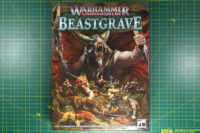

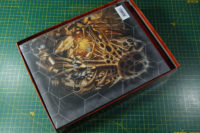
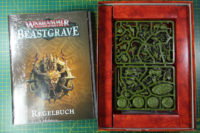
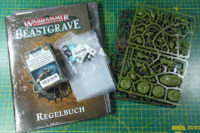
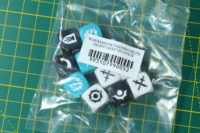
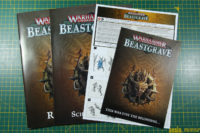
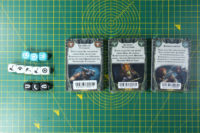
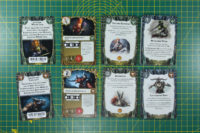
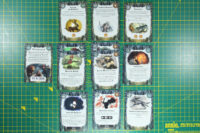
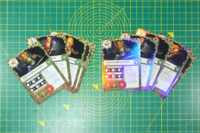
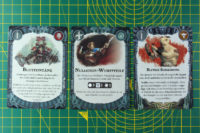
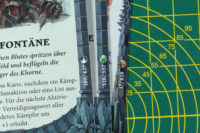
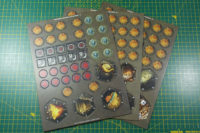
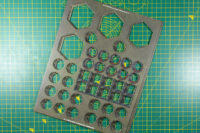
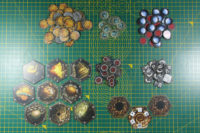
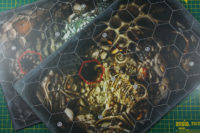
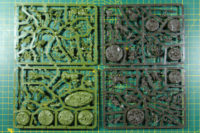
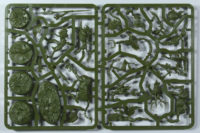
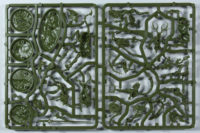
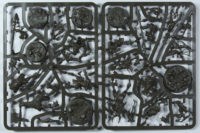
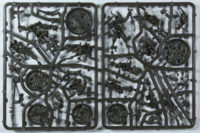
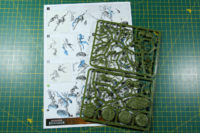
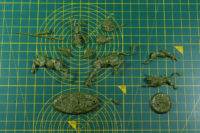
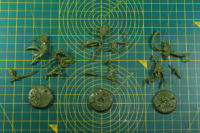
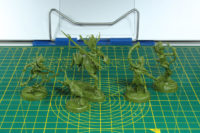
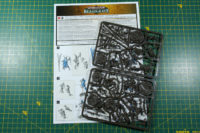
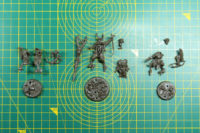
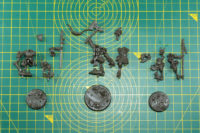
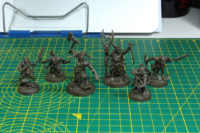
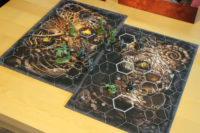
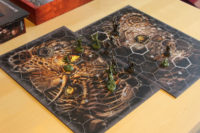
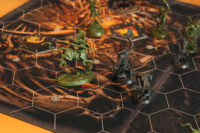
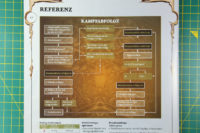
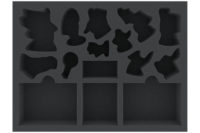
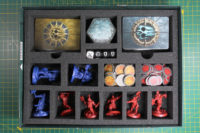
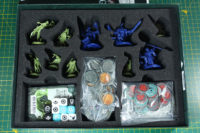
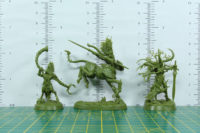
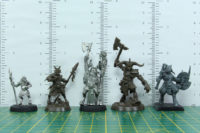
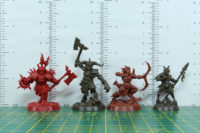
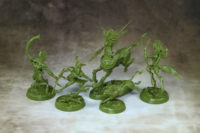
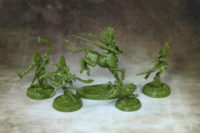
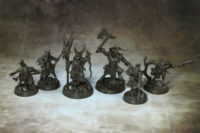
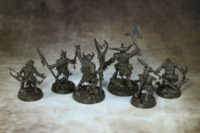












Leave a Reply